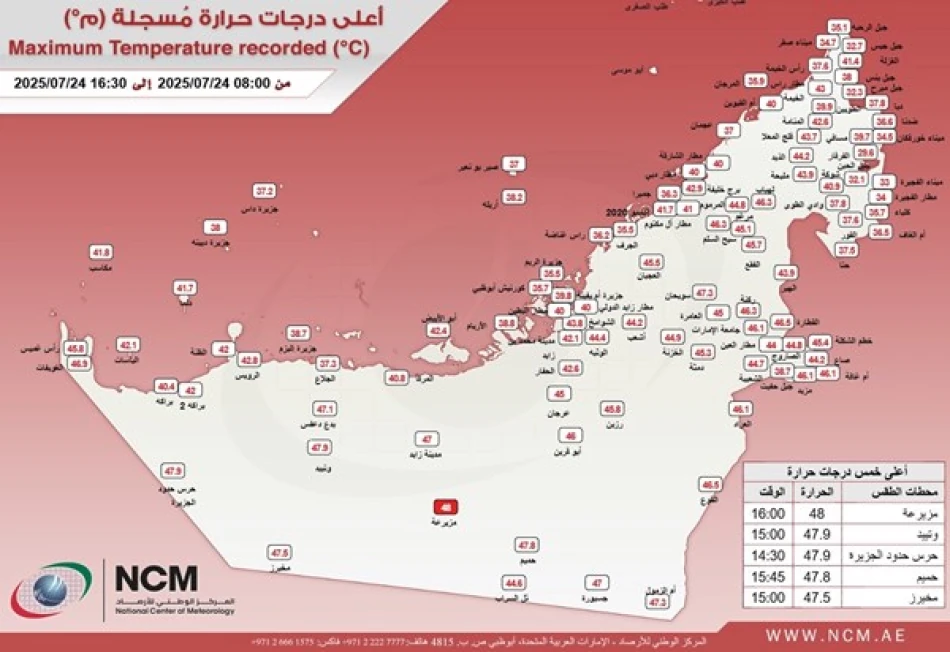
UAE Shatters Temperature Records: Extreme Heat Wave Grips the Nation
UAE Records Scorching 48°C as Summer Heat Intensifies Across Gulf Region
The United Arab Emirates experienced its highest temperature of the day at 48°C (118.4°F) in Madinat Zayed, Al Dhafra region, at 4:00 PM local time, according to the National Center of Meteorology. This extreme reading underscores the intensifying summer heat patterns affecting the Gulf region and highlights growing concerns about climate adaptation in one of the world's hottest inhabited areas.
Al Dhafra: The UAE's Heat Epicenter
The Al Dhafra region, located in Abu Dhabi's western expanse, has become synonymous with the UAE's most extreme temperatures. Madinat Zayed, where today's peak was recorded, sits in an inland desert area that regularly experiences the country's harshest summer conditions due to its distance from moderating coastal influences.
The timing of the peak temperature at 4:00 PM aligns with typical heat patterns in desert climates, where maximum temperatures occur several hours after solar noon due to accumulated thermal energy in the ground and atmosphere.
Regional Climate Context and Growing Extremes
This temperature reading reflects broader trends across the Arabian Peninsula, where summer highs have been pushing boundaries in recent years. The Gulf region has witnessed increasingly frequent temperature spikes above 45°C, with Kuwait and Iraq regularly recording readings above 50°C during peak summer months.
The UAE's geographic position, combined with urban heat island effects in major cities and the thermal properties of desert landscapes, creates conditions conducive to these extreme temperatures. Climate data shows that average summer temperatures in the region have risen by approximately 1.5°C over the past three decades.
Economic and Infrastructure Implications
Such extreme heat places enormous strain on the UAE's energy infrastructure, with cooling demands driving electricity consumption to peak levels. The country's power grid, designed to handle massive air conditioning loads, faces its greatest test during these temperature spikes, often leading to record daily energy consumption.
For the UAE's outdoor workforce, particularly in construction and logistics sectors, these temperatures trigger mandatory work restrictions. Labor laws require extended midday breaks and limit outdoor work hours when temperatures exceed certain thresholds, impacting productivity across multiple industries.
Climate Adaptation Strategies
The UAE has invested heavily in climate resilience infrastructure, from advanced cooling systems in public spaces to reflective building materials that reduce heat absorption. The country's urban planning increasingly incorporates heat mitigation strategies, including expanded green spaces and water features designed to create cooling microclimates.
These temperature extremes also drive innovation in renewable energy, as solar power generation peaks during the hottest periods when energy demand is highest. The UAE's massive solar installations in Al Dhafra region itself represent a strategic response to turning extreme heat into an energy advantage.
The 48°C reading serves as a reminder of the Gulf region's position at the forefront of global climate challenges, where adaptation and resilience have become essential elements of national planning and economic strategy.
 Layla Al Mansoori
Layla Al Mansoori







